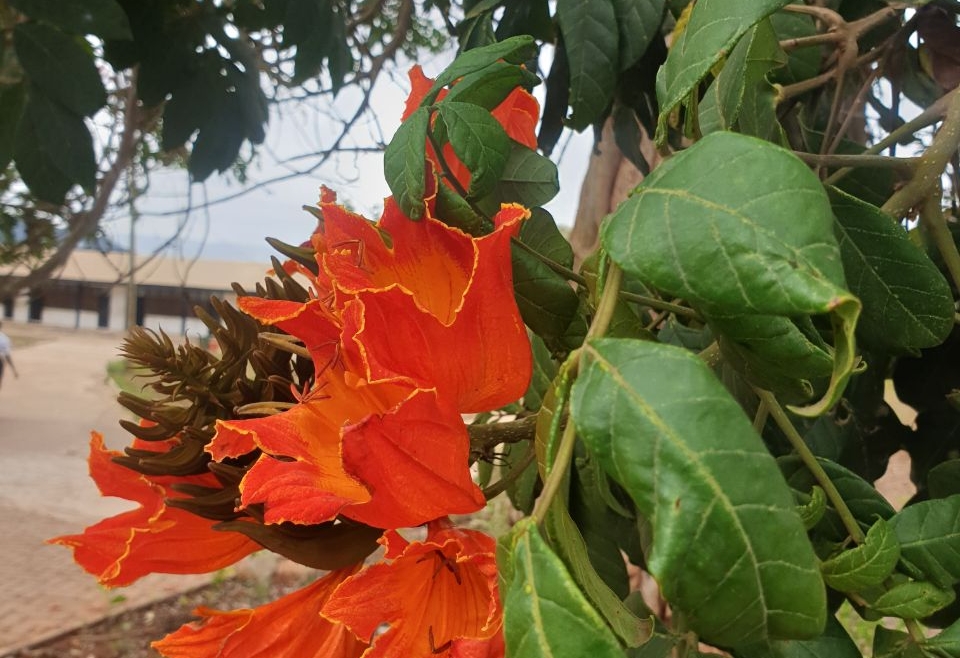Nature never ceases to amaze us with its incredible diversity, and the African Tulip Tree is no exception. With its majestic presence and vibrant blooms, this tree stands as a testament to the beauty and resilience of the natural world. Let’s take a closer look at the African Tulip Tree and uncover its fascinating characteristics.
Scientifically known as Spathodea campanulata, the African Tulip Tree is a native of tropical Africa. It has since been introduced to various parts of the world due to its stunning appearance and ability to thrive in diverse environments. Standing tall and proud, this tree can reach heights of up to 80 feet (24 meters) and boasts a broad canopy that provides shade to those fortunate enough to stand beneath it.
The most striking feature of the African Tulip Tree is undoubtedly its blossoms. Large clusters of fiery red, bell-shaped flowers adorn the branches, creating a vibrant spectacle that attracts attention from both humans and wildlife. These blooms, resembling tulips, lend the tree its common name. However, it’s worth noting that the African Tulip Tree is not a true tulip, but rather a member of the Bignoniaceae family.
The flowers of the African Tulip Tree are more than just visually captivating; they also serve as a vital source of nectar for various pollinators. Bees, butterflies, and birds flock to the tree, drawn by the abundant nectar and the opportunity to transfer pollen from one blossom to another, aiding in the tree’s reproductive process. The intricate dance between the African Tulip Tree and its pollinators is a testament to the intricate web of life and the essential role trees play in supporting ecosystems.
Beyond its visual appeal and ecological importance, the African Tulip Tree has found uses in human cultures as well. In some African countries, parts of the tree, such as the bark, leaves, and roots, are utilized for their medicinal properties. Traditional healers harness its therapeutic potential to address ailments ranging from fever and inflammation to skin conditions and digestive issues.
Moreover, the wood of the African Tulip Tree is valued for its durability and versatility. It is often used in carpentry, construction, and crafting, where its strength and attractive grain make it a sought-after material. However, sustainable harvesting practices are crucial to ensure the preservation of this remarkable species.
While the African Tulip Tree is undeniably captivating, it is essential to consider its potential impact on local ecosystems when introduced to new regions. As an exotic species, it can sometimes become invasive, outcompeting native plants and disrupting the delicate balance of the ecosystem. Responsible cultivation and management are essential to mitigate such risks.
The African Tulip Tree stands as a testament to nature’s artistry. Its towering stature, brilliant blooms, and ecological contributions make it a remarkable tree worth admiring. Whether it graces the landscapes of its native Africa or enchants viewers in far-flung corners of the world, the African Tulip Tree continues to captivate and inspire those who encounter its splendor. Let us cherish and protect the rich tapestry of flora that nature gifts us, reminding us of the wondrous beauty that lies within our world.


